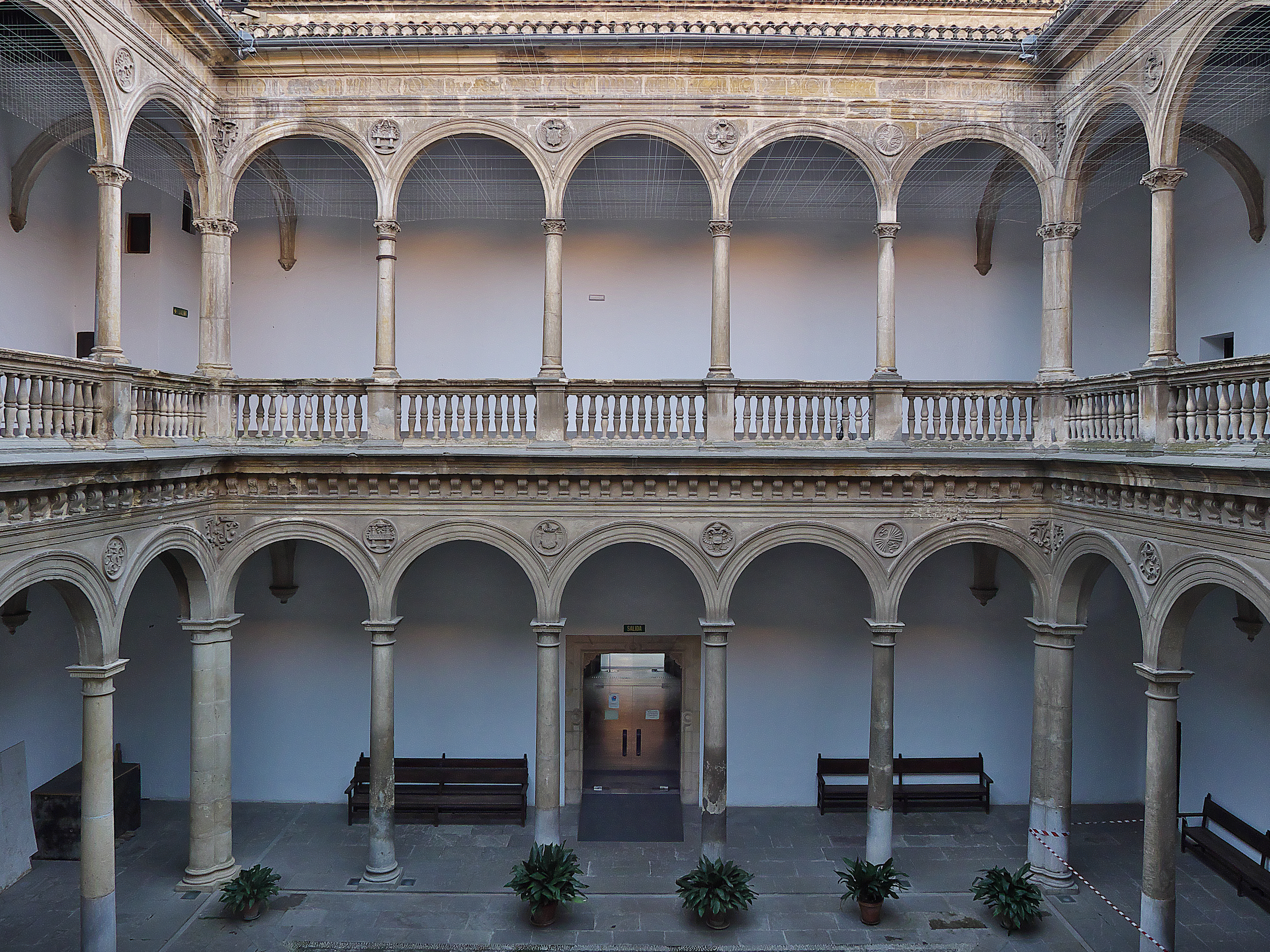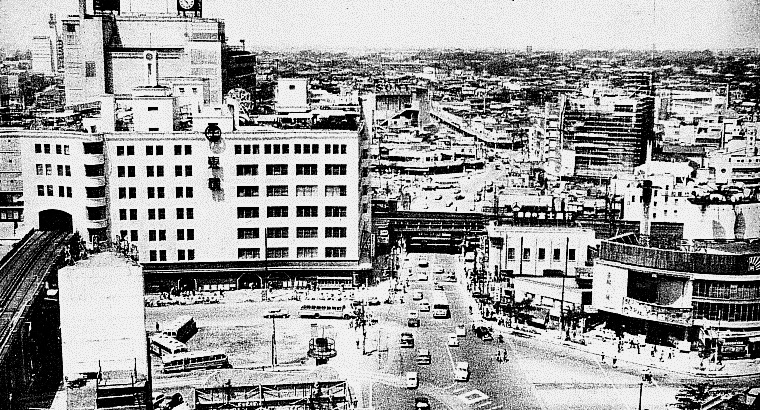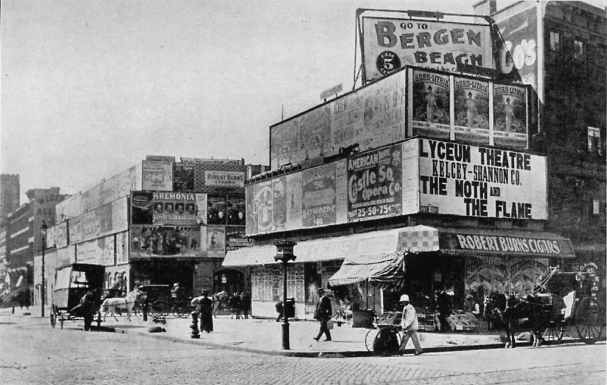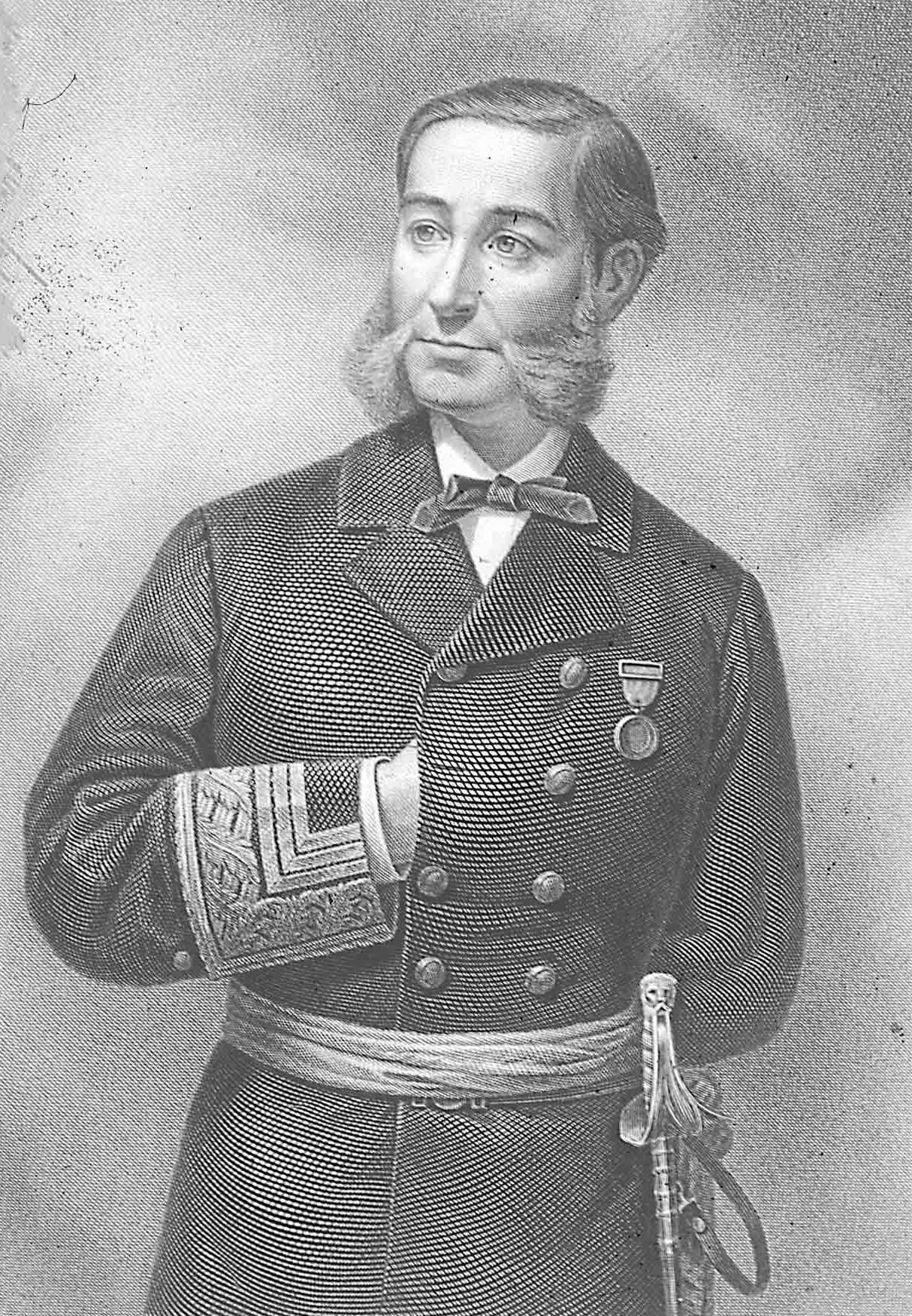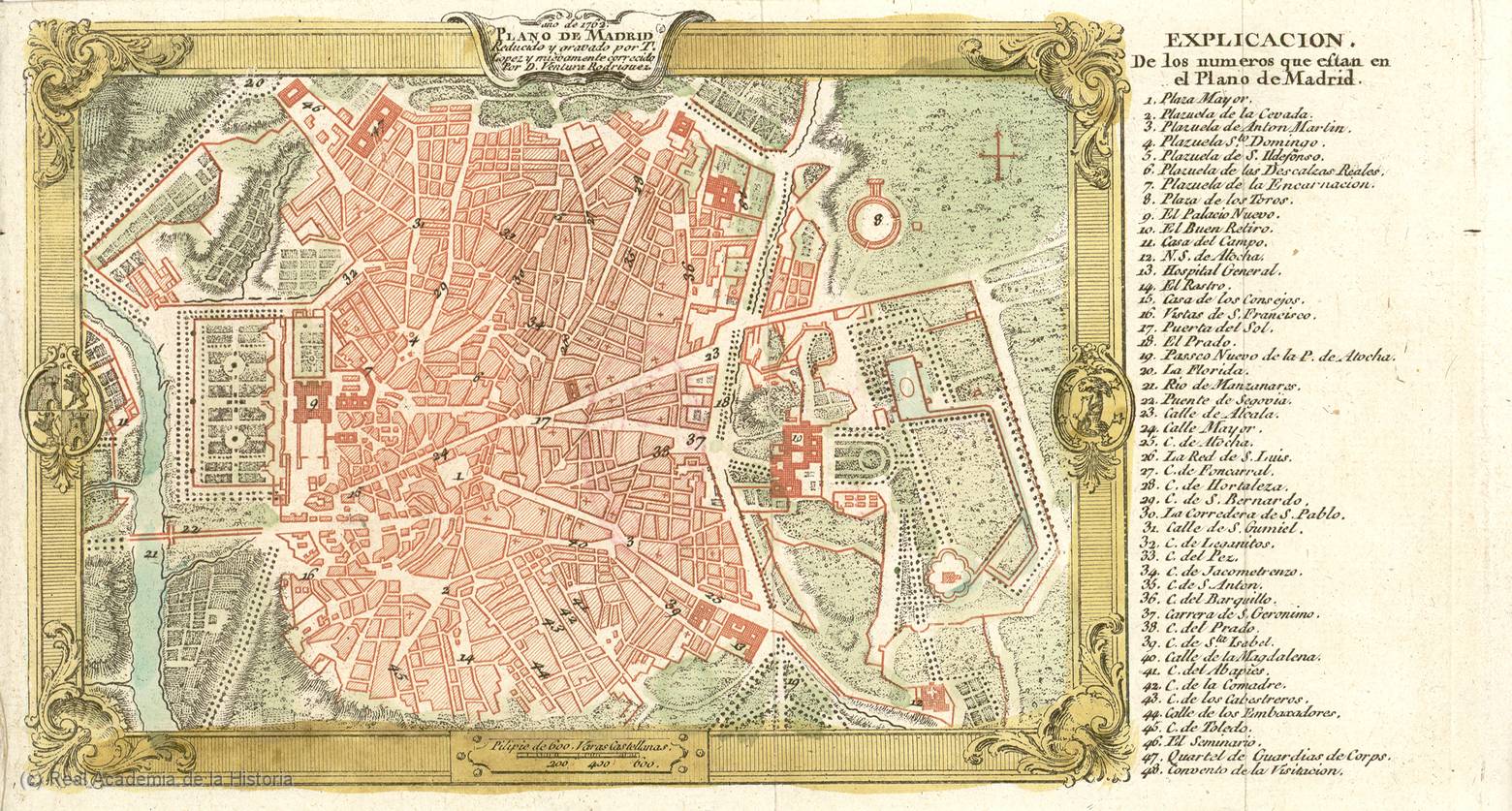|
Plaza De Callao
The Callao Square ( es, plaza del Callao) is located at the centre of the Spanish capital of Madrid. History and description Shaped in 1861, the square was formally opened in June 1866; its name remembers the May 1866 battle of Callao between the Spanish naval forces under the command of Casto Méndez Núñez and the Peruvian army. The square was substantially and aggressively reformed in the 21st century.; The reform removed nearly all elements present by that time, except the Callao (Madrid Metro), metro station access and a big tree, turning the square into a Pedestrian zone, pedestrian and homogeneous space, while adding a limited number of pieces of urban furniture. Conversely, big screens were added to the surrounding buildings. Located in a very commercial area of the city, the pedestrian space is often for rent to companies wanting to carry out advertising events. See also * Piccadilly Circus * Times Square * Yonge-Dundas Square * Shibuya References ;Citations ... [...More Info...] [...Related Items...] OR: [Wikipedia] [Google] [Baidu] |
Battle Of Callao
The Battle of Callao (, as it is known in South America) occurred on May 2, 1866, between a Spanish fleet under the command of Admiral Casto Méndez Núñez and the fortified battery emplacements of the Peruvian port city of Callao during the Chincha Islands War. The Spanish fleet bombarded the port of Callao (or El Callao), and eventually withdrew without any notable damage to the city structures, according to the Peruvian and American sources; or after having silenced almost all the guns of the coastal defenses, according to the Spanish accounts and French observers. This proved to be the final battle of the war between Spanish and Peruvian forces. Background President Juan Antonio Pezet assumed the presidency of Peru in April 1863, at a time when Spain was making efforts to recover some prestige by recovering its lost colonies in America. Spain began its campaign by seizing the Chincha Islands, which were rich in guano, and demanding indemnity as recompense for the murder ... [...More Info...] [...Related Items...] OR: [Wikipedia] [Google] [Baidu] |
Callao (Madrid Metro)
Callao is a station on Line 3 and Line 5 of the Madrid Metro The Madrid Metro (Spanish: ''Metro de Madrid'') is a rapid transit system serving the city of Madrid, capital of Spain. The system is the 14th longest rapid transit system in the world, with a total length of 293 km (182 mi). Its gro .... It is located in fare Zone A. It is named after the Plaza del Callao, under which it is located. References Line 3 (Madrid Metro) stations Line 5 (Madrid Metro) stations Railway stations in Spain opened in 1941 {{Madrid-metro-stub ... [...More Info...] [...Related Items...] OR: [Wikipedia] [Google] [Baidu] |
Universidad Nacional De Educación A Distancia
The National Distance Education University, known in Spanish as ''Universidad Nacional de Educación a Distancia'' (UNED), is a public research university of national scope. The university was founded in 1972 under the Ministry of Universities. It has headquarters in Madrid, Spain, with campuses in all Spanish autonomous communities. In addition, there are 14 study centres and 3 exam points in 13 countries in Europe, the Americas and Africa. The University awards undergraduate and postgraduate degrees, as well as non-degree qualifications such as diplomas and certificates, or continuing education units. Focused on distance learning combined with traditional classroom instruction (called hybrid or blended). With over 150.000 students, UNED is the largest university in Spain and the second largest in Europe. Origins and methodology Founded in 1972 with the stated purpose of providing education opportunities via a distance education system - in which students are taught whil ... [...More Info...] [...Related Items...] OR: [Wikipedia] [Google] [Baidu] |
University Of Granada
The University of Granada ( es, Universidad de Granada, UGR) is a public university located in the city of Granada, Spain, and founded in 1531 by Emperor Charles V. With more than 60,000 students, it is the fourth largest university in Spain. Apart from the city of Granada, UGR also has campuses in Ceuta and Melilla. In the academic year 2012/2013 almost 2,000 European students were enrolled in UGR through the Erasmus Programme, making it the most popular European destination. The university's Center for Modern Languages (CLM) receives over 10,000 international students each year. In 2014, UGR was voted the best Spanish university by international students. History In 1526 a college was founded in Granada by Holy Roman Emperor Charles V for the teaching of logic, philosophy, theology and canon law. On 14 July 1531, the establishment of a ''studium generale'' with the Faculty (division), faculties of theology, arts and canon law was granted by a papal bull by Pope Clement VII, C ... [...More Info...] [...Related Items...] OR: [Wikipedia] [Google] [Baidu] |
Shibuya
Shibuya ( 渋谷 区 ''Shibuya-ku'') is a special ward in Tokyo, Japan. As a major commercial and finance center, it houses two of the busiest railway stations in the world, Shinjuku Station (southern half) and Shibuya Station. As of April 1, 2022, it has an estimated population of 228,906 and a population density of 15,149.30 people per km2 (39,263.4/sq mi). The total area is 15.11 km2 (5.83 sq mi). The name "Shibuya" is also used to refer to the shopping district which surrounds Shibuya Station. This area is known as one of the fashion centers of Japan, particularly for young people, and as a major nightlife area. History Heian to Edo period Shibuya was historically the site of a castle in which the Shibuya family resided from the 11th century through the Edo period. Following the opening of the Yamanote Line in 1885, Shibuya began to emerge as a railway terminal for southwestern Tokyo and eventually as a major commercial and entertainment center. Meiji to Showa peri ... [...More Info...] [...Related Items...] OR: [Wikipedia] [Google] [Baidu] |
Times Square
Times Square is a major commercial intersection, tourist destination, entertainment hub, and neighborhood in Midtown Manhattan, New York City. It is formed by the junction of Broadway, Seventh Avenue, and 42nd Street. Together with adjacent Duffy Square, Times Square is a bowtie-shaped space five blocks long between 42nd and 47th Streets. Brightly lit at all hours by numerous digital billboards and advertisements as well as businesses offering 24/7 service, Times Square is sometimes referred to as "the Crossroads of the World", "the Center of the Universe", "the heart of the Great White Way", “the Center of the Entertainment Universe”, and "the heart of the world". One of the world's busiest pedestrian areas, it is also the hub of the Broadway Theater District and a major center of the world's entertainment industry. Times Square is one of the world's most visited tourist attractions, drawing an estimated 50 million visitors annually. Approximately 330,000 people ... [...More Info...] [...Related Items...] OR: [Wikipedia] [Google] [Baidu] |
Pedestrian Zone
Pedestrian zones (also known as auto-free zones and car-free zones, as pedestrian precincts in British English, and as pedestrian malls in the United States and Australia) are areas of a city or town reserved for pedestrian-only use and in which most or all automobile traffic is prohibited. Converting a street or an area to pedestrian-only use is called ''pedestrianisation''. Pedestrianisation usually aims to provide better accessibility and mobility for pedestrians, to enhance the amount of shopping and other business activities in the area or to improve the attractiveness of the local environment in terms of aesthetics, air pollution, noise and crashes involving motor vehicle with pedestrians. However, pedestrianisation can sometimes lead to reductions in business activity, property devaluation, and displacement of economic activity to other areas. In some cases, traffic in surrounding areas may increase, due to displacement, rather than substitution of car traffic. None ... [...More Info...] [...Related Items...] OR: [Wikipedia] [Google] [Baidu] |
Casto Méndez Núñez
Casto Secundino María Méndez Núñez (July 1, 1824 – August 21, 1869) was a Spanish naval officer. In 1866 during the Chincha Islands War between Spain, Peru and Chile, he was general commander of the Spanish fleet in the Pacific. As such, he bombarded and destroyed the port of Valparaiso, and fought the Battle of Callao (during which he was injured nine times.) Méndez Núñez was the first man to circumnavigate the world on an ironclad warship: ''"Enloricata navis quae primo terram circuivit"''. When Hugh Judson Kilpatrick, the American Minister to Chile, learned that Commodore Méndez Núñez was to bombard the port of Valparaiso, he asked the American naval commander Commodore John Rodgers to attack the Spanish fleet. Méndez Núñez famously responded with "I will be forced to sink he US ships because even if I have one ship left I will proceed with the bombardment. Spain, the Queen and I prefer honor without ships than ships without honor (''España prefiere honra si ... [...More Info...] [...Related Items...] OR: [Wikipedia] [Google] [Baidu] |
Centro (Madrid)
Centro is a district of Madrid, Spain. It is approximately 5.23 km2 (2.02 sq mi) in size. It has a population of 149,718 people and a population density of 28,587/km2 (74,040/sq mi). It roughly corresponds to the bulk of the housing formerly enclosed by the so-called Walls of Philip IV. The district is made up of the neighbourhoods of Cortes, Embajadores, Justicia, Universidad, Palacio and Sol. History The Centro district of Madrid is the oldest section of the city. Evidence of a stable settlement dates back to Spain's Muslim period. In the second half of the 9th century, the emir of Córdoba, Muhammad I (852–886), built a fortress on a promontory beside the river, the modern-day location of the Royal Palace. Its purpose was to watch the passes of the Sierra de Guadarrama and to initiate raids against the northern Christian countries. The remaining ruins of the fortress's wall are still preserved. A small suburb called Magerit developed to the east of the fortres ... [...More Info...] [...Related Items...] OR: [Wikipedia] [Google] [Baidu] |
Battle Of Callao
The Battle of Callao (, as it is known in South America) occurred on May 2, 1866, between a Spanish fleet under the command of Admiral Casto Méndez Núñez and the fortified battery emplacements of the Peruvian port city of Callao during the Chincha Islands War. The Spanish fleet bombarded the port of Callao (or El Callao), and eventually withdrew without any notable damage to the city structures, according to the Peruvian and American sources; or after having silenced almost all the guns of the coastal defenses, according to the Spanish accounts and French observers. This proved to be the final battle of the war between Spanish and Peruvian forces. Background President Juan Antonio Pezet assumed the presidency of Peru in April 1863, at a time when Spain was making efforts to recover some prestige by recovering its lost colonies in America. Spain began its campaign by seizing the Chincha Islands, which were rich in guano, and demanding indemnity as recompense for the murder ... [...More Info...] [...Related Items...] OR: [Wikipedia] [Google] [Baidu] |
